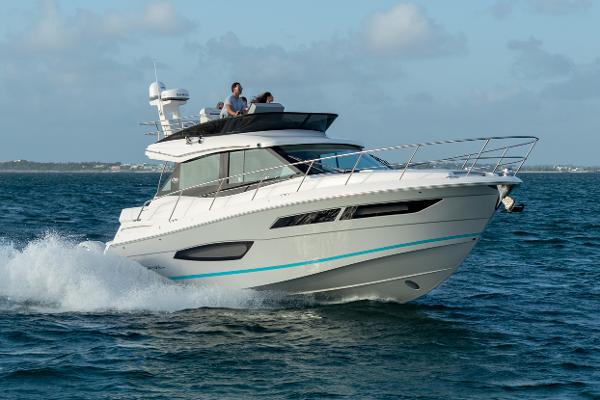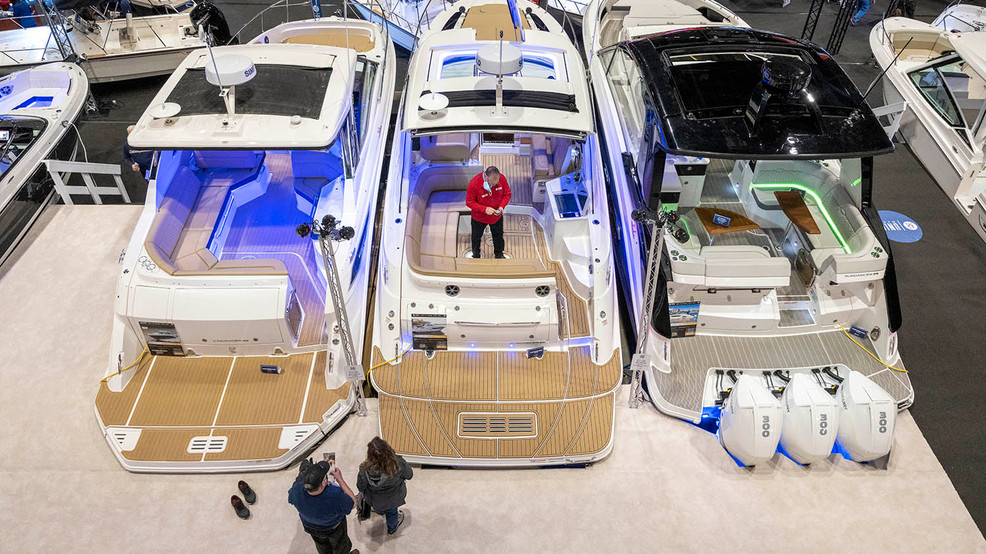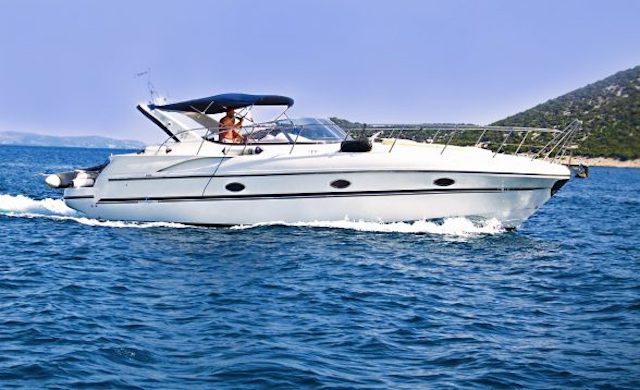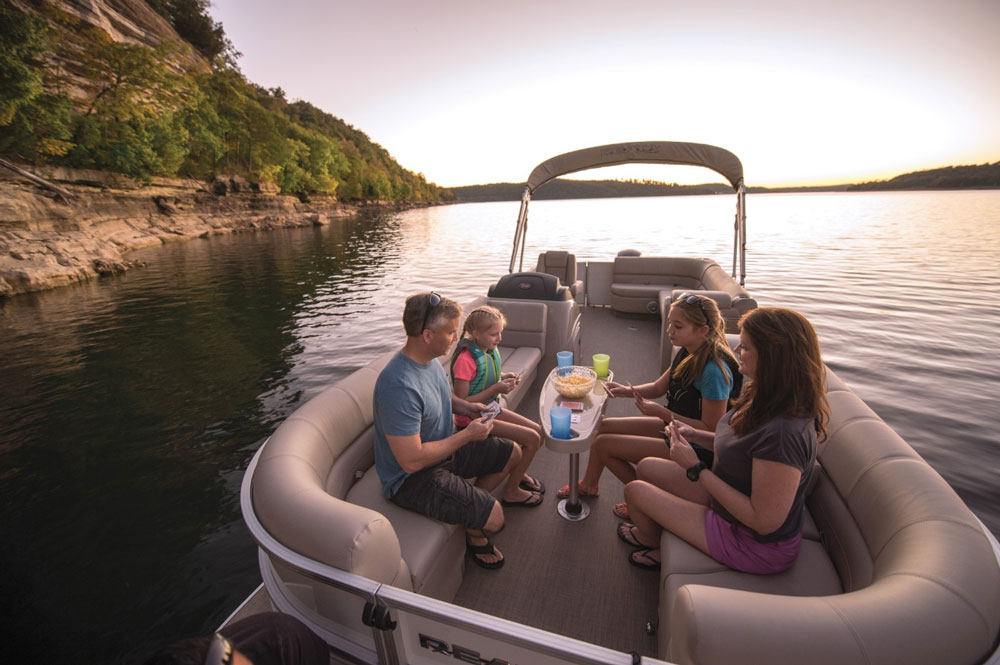12 Ways to Buy a New Boat for Less –Part II

7. No Trade-In
Most boat brands build in a healthy MSRP margin for the dealers so they can afford to take a boat in trade. This why the dealer’s first question to you is do you have a trade?
It’s not reasonable for you to expect a dealer to give you top dollar for your used boat. To do that he must sell the boat himself, therefore tying up his cash or line of credit with the hope of being made whole. Rather, when they do take a trade, they usually get rid of it at auction at wholesale price, unless they have a buyer already lined up, or if it is an exceptionally good boat.
If it’s a big boat, he’ll want a survey, and then want you to pay to have the boat brought up to a certain standard, otherwise he’s stuck with your problems.
All it takes is one big dip in the stock market -- or an act of Congress -- to jolt consumer confidence and spoil the price of a used boat. If you have a boat that you need to trade in, you will probably be better off by having a good broker sell it for you. Even though you’ll be paying 10% in commission, you’ll net more than you would with a trade in from a dealer in most circumstances.

8. Buy from a Strong Dealer
Years ago, we interviewed one of the biggest boat dealers in the Northeast and he said that selecting the right dealer was more important than selecting the right brand. He was saying a strong dealer is a boat owner’s best friend when things go wrong with a boat – and they will, even with good ones. He was saying that a strong dealer had influence with a builder that a small, weak dealer does not.
He could have also mentioned that a strong, high-volume dealer can buy some brands for less from the builder, or gets an end-of-year rebate, like car dealers. A strong dealer can pass along that discount. In the cases of large boats, a strong dealer also has muscle with the builder during contract and pricing negotiations.

9. Don’t Load Up with Options
When many people buy a new boat it reminds us of kids at Christmas -- they want every toy in Santa’s bag. But are all of the available bells and whistles really needed, or are they even worth the money? A boat is the ultimate toy, but does it really need to be loaded with gimcracks?

In the dealer’s defense, he had to order and spec the boat on his lot, 6 to 9 months before the boat arrived. He must guess what he thinks people he hasn’t even met yet, may want. He knows that most customers like lots of options, so he will put some on. So, while you may pay for a boat that has options you don’t want, on the other hand you have the convenience of getting a boat when you want it.
All builders take a slightly different approach to their standard equipment list. For example, some builders strive to create the lowest base price possible, knowing that it will catch consumers eyes because it so far below the market. In these cases, a responsible dealer will order boats for his inventory that are equipped enough for their basic use – and the price will be considerably higher than the advertised one.
Other builders choose not to play pricing games, and put on the standard list equipment they know is needed and most people want.

10. Don’t Overpower the Boat
This is another reason why so many people come to BoatTest – they want to see our independent 3rd party test of the performance of boats they are thinking about buying.
Adding 20% more horsepower will not yield 20% greater speed. It usually only provides 2 to 5 mph to an outboard boat’s speed. Depending on the boat, adding 200 hp to an inboard diesel may only increase the top speed a knot or two.
Each boat type and use, has a range of speeds where the boat is comfortable to operate. Even though the boat can go 55 miles an hour, it will probably be more comfortable for all concerned at 35. Also, when it’s rough, in most cases the boat can only be run so fast before you will need back surgery.
High top speed is no longer the name of the game. Just watch.

11. Buy a Non-Current Boat
A non-current boat is one that is being sold after the end of its model year as printed on its HIN number on the transom. Many of these boats were sold in the two or three years after the Great Recession, and their buyers got a lot of boat for the money, and were more likely to come out better when they sold the boat several years later.
While this is an extreme example, there have been several times during the last 50 years where good boats bought at the right price actually sold for the same or even more on the used boat market 5 years later than the initial price paid. The ever-increasing cost of boats, and the ever-dwindling value of the dollar could well make this happen again in the future.
Consumer caveat: Boat loan institutions will consider non-current boats “used” even though it was never before sold or operated, so the interest rate will be higher, and the term could be possibly shorter. Because of the pandemic and order backlog, there are relatively few non-current boats available.
If you find one, the first question to ask yourself is why no one has bought the boat. So long as you’re satisfied that she is not a model with a poor reputation, or has some other malady, you may be doing yourself and the dealer who owns the boat a favor.

12. Buy Immediately After a Disaster
While we don’t expect serious buyers to be waiting around for the sky to fall, if it happens – you’ve just received a buy signal. The reason for this doomsday opportunity is because no one needs a boat but a drowning man. Boat dealers and builders know it doesn’t take much for consumer sentiment to turn on a dime, and with it months or maybe even years of low boat sales could follow.
Some examples of these contrarian opportunities are:
*A Stock Market Crash, or sector bubble burst (Dot Com burst 2000)
*A Declaration of War (1991 Gulf War)
*Massive Financial Failures (Lehman Bros. 2008; S&L Bank failures 1988)
*Aggressive spikes in Fed Funds rates (1974-75, 1981-82)
*A Pandemic Scare (Mid-March to Mid-April, 2020)
*OPEC plays Hardball (1980, 2000, 2008, 2011, 2022)
*Housing Market Crashes (1980-82, 1990-95, 2009)
*New Tax Laws (1991)
*Sovereign Debt Default (?)

In the last 43 years, we can only remember three times when boats sold at significant discounts to their normal prices for a prolonged period of time. Usually in truly disastrous times financial, oil, stock, housing markets all rock together. For example--
1979-81 during the period of high-interest rates; many dealers went out of business and sold boats for whatever they could get to raise cash.
1989-91, when inventories were allowed to get way ahead of the market, the first Gulf War, a spike in oil prices, and the 10% luxury tax on boats costing more than $100k were the coups de grace for many more dealers and boat builders, too. Fire-sale prices were abundant.
2008-2011, the Great Recession. It took several years to sell off dealer inventory and again many dealers went out of business in the process. This is the period of big discounts on boats that consumers still remember.
Many of the opportunities are short lived. The best example was the 20 to 30-day period from mid-March to Mid-April 2020 when the boating industry – used to every disaster killing business – battened down the hatches preparing for the worst when the Covid-19 pandemic hit. There was a brief period of time, when buyers could get lower prices, before the tsunami of pandemic consumers rolled in.
Major banks and other financial institutions are predicting a recession for the latter half of 2023, and certainly housing prices are at an all-time high, Putin’s War could get hotter, the Fed is not shy about rate increases now, and the stock market is down 15% to 20% from its high.
If you missed PART I...Click here...